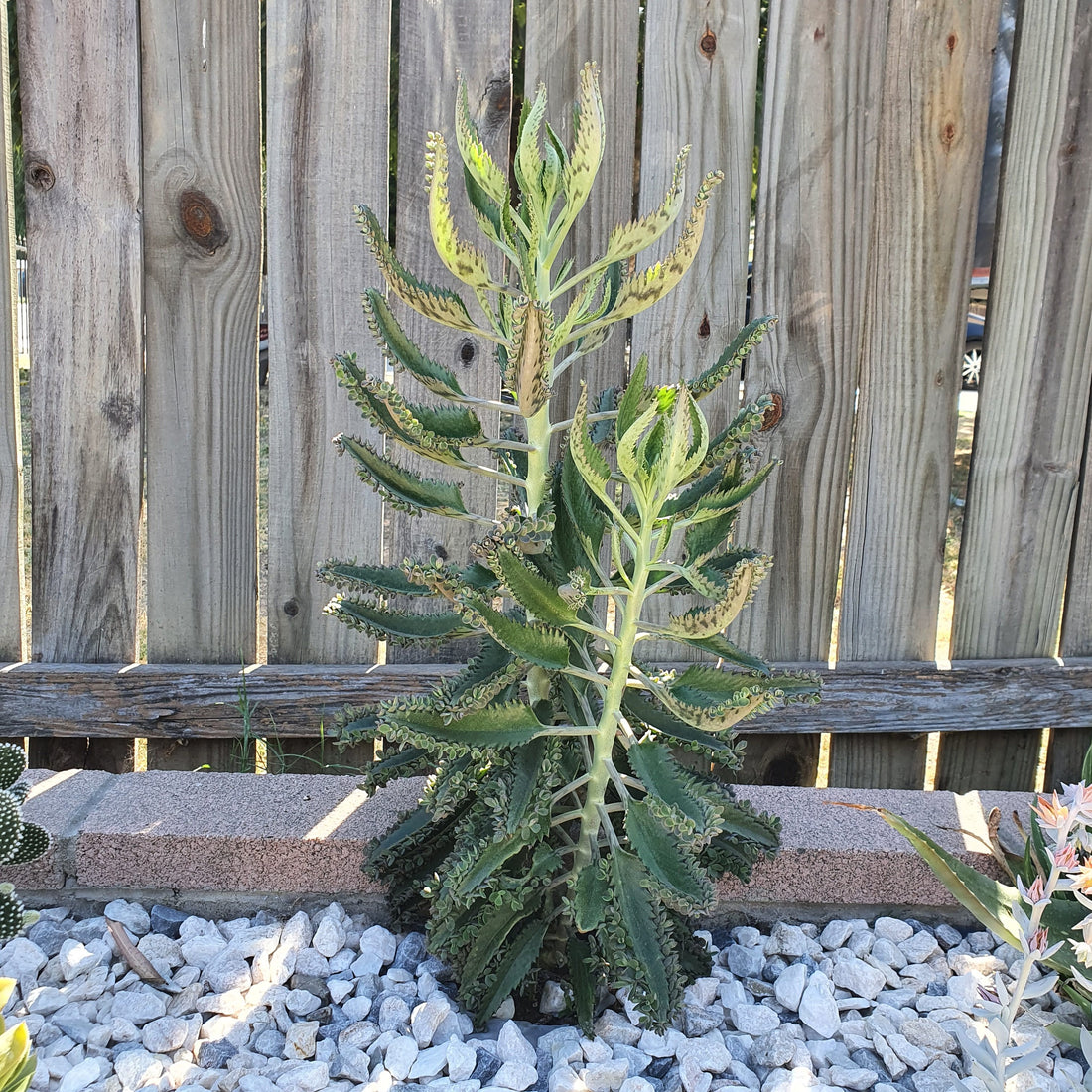
Kalanchoe daigremontiana Mother of Thousands Succulent Care
Mother of Thousands, also known as Kalanchoe daigremontiana, is a unique succulent known for its ability to produce numerous small plantlets along the edges of its leaves. These plantlets, also called "pups" or "babies," eventually drop off the parent plant and root wherever they land, giving rise to new plants.
While the traditional Mother of Thousands typically has green leaves, there are cultivars that feature pink or reddish hues. One such cultivar is the "Pink Mother of Thousands," which displays pinkish tones on its leaves, adding a colorful twist to this already fascinating plant.

Pink Kalanchoe, characteristic of Pink Plantlets
all around Leave
 Kalanchoe Daigremontiana produces clusters of small, bell-shaped orange flowers in spring. These flowers add a beautiful touch to the plant and attract pollinators. Therefore, if you notice the flowers wilting and the formation of plantlets during the summer months, it's a natural part of the plant's life cycle. You can collect the plantlets if desired and propagate them to grow new plants, or allow them to fall and root where they land, creating a charming cluster of Mother of Thousands plants.
Kalanchoe Daigremontiana produces clusters of small, bell-shaped orange flowers in spring. These flowers add a beautiful touch to the plant and attract pollinators. Therefore, if you notice the flowers wilting and the formation of plantlets during the summer months, it's a natural part of the plant's life cycle. You can collect the plantlets if desired and propagate them to grow new plants, or allow them to fall and root where they land, creating a charming cluster of Mother of Thousands plants.
Here's how to care for Mother of Thousands:
1. Light: Mother of Thousands prefers bright, indirect light. It can tolerate some direct sunlight, especially in the morning or late afternoon, but be cautious of intense midday sun, which can scorch the leaves.
2. Watering: Like other succulents, Mother of Thousands requires well-draining soil. Allow the soil to dry out between waterings, and then water thoroughly. Avoid overwatering, as it can lead to root rot.
Absolutely, watering directly into the soil rather than on the leaves is a crucial aspect of caring for your Succulents. Here's why:
1. Watering into the soil:
- When watering, it's best to aim the water directly at the soil around the base of the plant. This allows the roots to absorb moisture efficiently.
- Watering the soil helps prevent water from accumulating on the leaves, which can create a humid environment conducive to fungal diseases.
- Directing water to the soil also prevents water from pooling in the center of the rosette (in the case of Kalanchoe) or at the base of the plant (in the case of Mother of Thousands), which can lead to rot.
2. Avoiding watering the leaves:
- Water droplets left on the leaves can act as magnifying glasses, focusing sunlight and potentially causing leaf burn or scorched spots, especially if the plant is exposed to intense sunlight.
- Wet leaves can also increase the risk of fungal infections, particularly in humid environments or if airflow around the plant is limited.
- For plants like Kalanchoe, which often have thick, fleshy leaves, excess moisture can become trapped between the leaves, creating a breeding ground for pests and diseases.
By watering directly into the soil and avoiding wetting the leaves, you can help maintain the health and vigor of your Kalanchoe and Mother of Thousands plants, minimizing the risk of issues such as leaf damage and disease.
3. Temperature: Maintain temperatures between 60°F to 85°F (15°C to 29°C) for optimal growth. Protect the plant from cold drafts and frost, as it is sensitive to low temperatures.
4. Soil: Plant Mother of Thousands in a well-draining potting mix formulated for succulents or cacti. A mixture of potting soil, sand, and perlite works well to ensure good drainage and aeration for the roots.
5. Fertilizing: Feed your Mother of Thousands with a balanced liquid fertilizer diluted to half strength during the growing season (spring and summer). Avoid fertilizing during winter dormancy.
6. Propagation: Mother of Thousands readily propagates itself by producing plantlets along the edges of its leaves. Once the plantlets have developed roots, they can be carefully removed and potted up to grow into new plants.
Plantlets about to fall from the leave 
7. Pests and diseases: Keep an eye out for common succulent pests such as mealybugs and aphids. Pink Mother of Thousands is generally resistant to pests and diseases but inspect the plant regularly and treat any issues promptly.
With its unique appearance and ease of care, Mother of Thousands is sure to make a striking addition to your succulent collection. Enjoy watching its leaves produce new plantlets and marvel at its charming hues!
